Dennis Chew is currently Director of Perth studio at DKO. His outstanding skills have been deployed across multiple projects of varying scale – from single houses to high-rise apartments and hotels – both within Australia and internationally.
We were lucky enough to talk to him about the changing notion of "own home", about the combination of modernity and heritage in the approach to architecture, and how to create a trustworthy partnership between architecture and visualization studio.
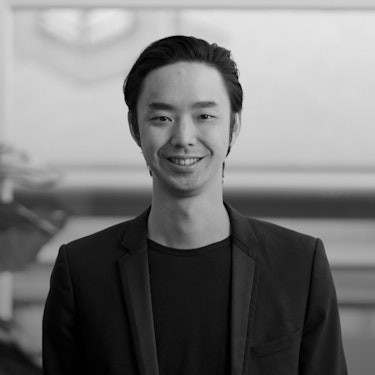
Photo credit: DKO
Alina: Hi, Dennis. Thank you for agreeing to chat with us and answer a few questions despite your busy schedule.
I would like to start our conversation with an interesting message claimed by your company: "We remain tethered to our brick and mortar materials whilst still effectively using the latest digital drawing technologies. This is part of our visuality". Tell me how you identify this symbiosis and how it is displayed in your projects?
Dennis: We always start with a vision and picture of the end goal. It is a profession that has got potentials to make big positive impact to the community on the outcome. It is often challenging to convey our vision and intention to the stakeholders and the community just by words or architectural drawing, this is where technology assists greatly to tell the narrative. 3D Rendering, 3D printing, VR, to name a few. Great partnership like you are is an asset to us.
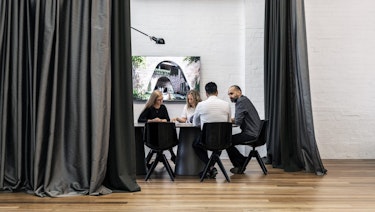
Photo credit: DKO
Alina: Once you said that: “It’s a constantly evolving world and technology is changing, cars on the road are increasing and there is more awareness of the environment so being able to do more in your own home is a logical thing”.
You often emphasize that the meaning of own home has changed and continues to change. I want to ask you how you see the development of these changes?
Dennis: The meaning of home differs from one individual to another, from one environment to another. Separating home from the outside world is crucial. We as professionals are always researching what is the best outcome for the end user. Space flexibility is something that we put a lot of effort into and emphasis on, creating a space that appeals to as wide a demographic as possible. The way of living will continuously evolve with its surroundings, whether it’s geographical context, environment or technology which ultimately will change human behavior. As for now, we are focusing on a home that still feels like a home regardless of its size and location and to provide flexibility in spending more time at home with the loved ones or for the loved ones to visit.
Alina: How will architectural projects be changed in response to the request for these changes?
Dennis: Our architecture ethos is for the projects to be contextual and sympathetic to its surrounding, functional beauty and as future proof as we can get them to be. The changes in response to the request of the current environment will be a bigger emphasis on more flexibility leading into longevity in both use and aesthetics. I feel that architectural projects will respond to the lifestyle of the new generation and an escalation in consideration towards sustainability. More reliant on technology, less reliant on commuting. Architecture/building will need to work a lot harder as people will stay a longer period of time in one particular place.
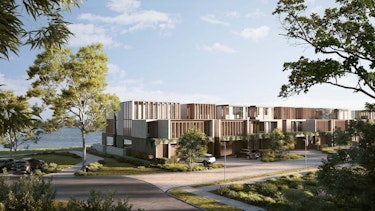
Alina: Project BURSWOOD resonates in many ways with this desire for peace in its own, autonomous space, adapted to a wide variety of needs. How did you and your team come up with the idea for this project? Was it a response to your reasoning to the new meaning of own home?
Dennis: Burswood follows a lot of the narrative above. We were involved at the very inception of the land. The masterplan was to create a place that is serene and a sustainable community by breaking up a group of homes into smaller pockets via “green spine” landscaping that leads back to the river, creating a smaller community within the site that encourages interaction between homes while capturing all the surrounding amenity.
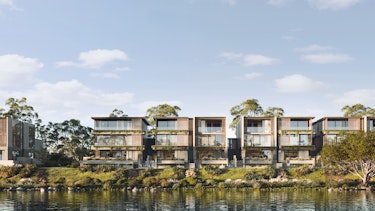
Alina: In the BURSWOOD project you also displayed the concept of "living between the city and nature". The CUUB team worked with great trepidation to capture the essence of this combination and the experience that is embedded in this message. How important do you think it is to show future owners this combination? Why do modern people need such a solution?
Dennis: I feel that modernisation of home also means bringing people closer to the hub both for convenience and better way of spending time. Which also contributes to environmental sustainability. I believe that it is important because there are more of us getting conscious of quality of life and also contributing back to nature. Creating a density that is comfortable and achieving the above objectives is crucial.
Alina: BURSWOOD project has a lot of meanings and solutions that resonate very much with the desire to find a balance between peace and active choices, between the desire to be closer to the community, but also to have a locally comfortable solitude. How architectural visualization can help deepen customer’s immersion in project messages, in your opinion? Did the CUUB team manage to cope with this task?
Dennis: The saying “picture speaks thousand words” is really something we can relate to. It is also unfair that customers understand the ultimate vision and narrative without a painted picture. Saying that, the images from yourselves (CUUB) has assisted in great quantum to delivery the message. With so many “visualisers” out there, we, DKO, are a fan of your work as there is a lot more than architecture and painting a picture, it is the essence of life, the emotion and the vibe that is as important to capture. We believe the CUUB team has done a great job doing so.
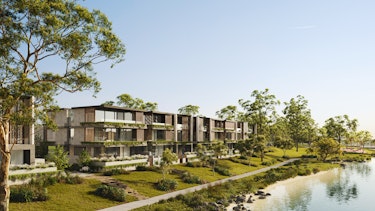
Alina: What is important to you when choosing a visualization partner? And why did you decide to entrust your stories to the CUUB team?
Dennis: Perhaps it is difficult to explain in words when it comes to design and visualising design. Some get it, some just don’t. We think CUUB do. It’s also the communication and the turnaround time that really assists in our communication back whether it is a council, client or community. It is important for us to be able to TRUST that our visualisation partner “gets it”, communicates well and delivers both in timing and quality.
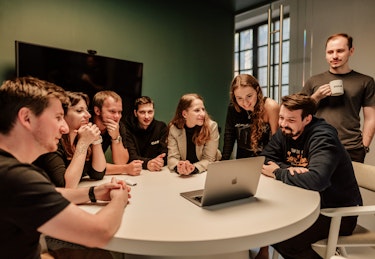
Alina: Thanks again for taking the time to share your thoughts. I hope that we will continue to develop our partnership and there are more exciting joint projects ahead of us.
Dennis: Lastly, I would like to add. Thank you and your bravery to continue delivering in difficult times that you are facing are truly commendable. I hope our relationship goes a long way.
